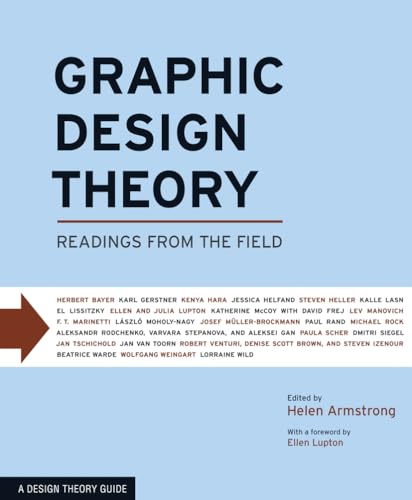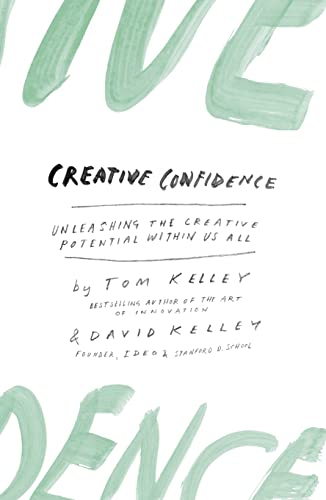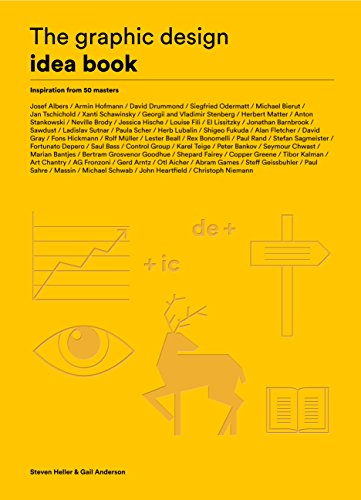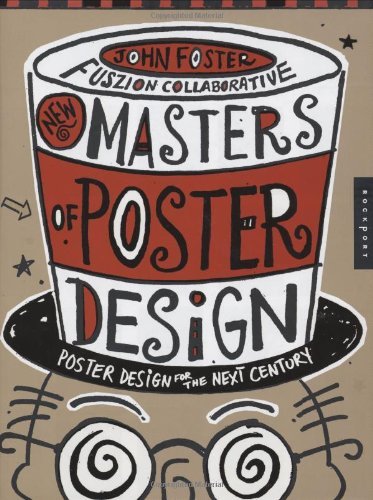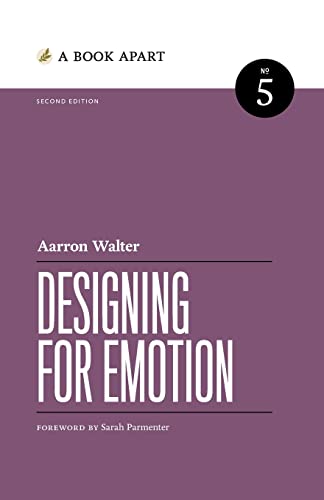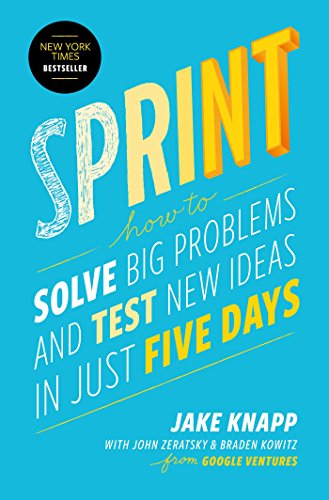The 37 Best Design Books to Level Up Your Skills
As a designer, expanding your knowledge is crucial for professional growth. Reading is one of the best ways to learn new techniques, theories, and approaches to elevate your craft. With so many design books out there, it can take time to identify the true gems worth investing your time into reading. To help, I've compiled this list of the 37 best design books covering various specialities – from typography and layout to UX and web design. Read on for the cream of the crop regarding design literature.
Table of Contents
Fundamentals of Graphic Design
Before diving deep into specialised areas of design, it helps to brush up on graphic design fundamentals. These books strongly introduce the key principles and practices all designers should know.
Understanding the Basics: Graphic Design Theory
Graphic Design Theory is a seminal text by Helen Armstrong that explores the fundamentals of graphic design. With a balanced theoretical and practical approach, this book covers:
- Critical elements like colour, type, images, etc.
- Core design principles
- Concepts of visual organisation and composition
- Creative problem-solving processes
- Graphic design history
Ideal for beginners yet insightful for experienced designers, Graphic Design Theory helps cement core graphic design knowledge.
- English (Publication Language)
- 151 Pages – 03/30/2009 (Publication Date) – Princeton Architectural Press (Publisher)
Design Thinking for Visual Communication
This introduction to visual communication zeroes in on graphic design's role in contemporary culture and society. Author and design educator Gavin Ambrose outlines graphic language, design thinking, and problem-solving processes in a simple, understandable way.
Key lessons cover:
- Graphic design goals and objectives
- Essential elements like colour, shape, space, etc.
- Typography and images in graphic design
- Creative conceptualisation and problem-solving
- Graphic design's role in business, society and culture
With practical activities and projects, this book makes grasping design fundamentals interactive and engaging for beginners.
- Ambrose, Gavin (Author)
- English (Publication Language)
- 184 Pages – 08/22/2019 (Publication Date) – Bloomsbury Visual Arts (Publisher)
The Design of Everyday Things
Don Norman's seminal work explores how design communicates between object and user. He examines why some products confuse users while others feel intuitively easy to operate. This book will train you to think like a designer and critically assess everyday items.
Key insights:
- The function should influence the form
- Design for people's capabilities and consider possible errors
- Well-designed objects should be easy to interpret and understand
Initially written in 1998, Don's wisdom has stood the test even as technology advances. The Design of Everyday Things remains a must-read for new designers.
- Donald A. Norman (Author)
- English (Publication Language)
- 288 Pages – 09/19/2002 (Publication Date) – Basic Books (Publisher)
Design for Real Life
In Design for Real Life, authors Eric Meyer and Sara Wachter-Boettcher make an urgent case that designers must consider diverse perspectives beyond young, able-bodied tech workers. Unless you consciously work against it, your biases will limit your problem-solving ability.
They provide practical advice for building empathy and designing more compassionately. This modern manifesto sets an agenda for a more equitable design process.
Key insights:
- Good design requires understanding diverse needs
- Build empathy through interviews and panels
- Consider how tech fails people, unlike the designer
- Compassion allows you to solve more significant problems.
- Meyer, Eric (Author)
- English (Publication Language)
- 146 Pages – 03/08/2016 (Publication Date) – Book Apart (Publisher)
Design for Sustainable Change
Design academics Anne Chick and Paul Micklethwaite deliver research and resources to achieve sustainable design at scale. They offer tools to assess environmental and ethical impact across the production cycle.
Chick and Micklethwaite also showcase global case studies where designers drove positive changes in public health, urban planning and economic development. This handbook equips you to make your practice regenerative.
Key insights:
- Design should avoid unintended harm
- Assess sustainability with a life cycle lens
- Design can solve multifaceted global problems.
- Strategic frameworks guide regenerative change
- Used Book in Good Condition
- Chick, Anne (Author)
- English (Publication Language)
- 184 Pages – 07/20/2011 (Publication Date) – AVA Publishing (Publisher)
Creative Confidence
The Kelley brothers from legendary design firm IDEO empower readers to unlock their latent creativity in Creative Confidence. They argue confidence comes through hands-on practice, which stimulates innovation.
With amusing anecdotes and targeted advice, the Kelleys guide you through human-centred techniques like prototyping, embracing failure and learning by doing. Creative Confidence inspires positive risk-taking.
Key insights:
- Apply design processes in daily life
- Rapid prototypes test concepts
- Fail small, fail fast, fail often
- Think with your hands to visualise solutions
- A design mindset builds creative confidence.
- Tom Kelley (Author)
- English (Publication Language)
- 288 Pages – 01/01/2015 (Publication Date) – HARPER COLLINS (Publisher)
The Graphic Design Idea Book
The Graphic Design Idea Book features a collection of design expert Steven Heller’s best tips and insights from the distinguished careers of 50 masters.
Topics span:
- Creative concepts and themes
- Style guide creation
- Branding and identity design
- Publication and editorial design
- Packaging designs
- Unconventional formats and finishes
Complete with hundreds of colour images; this book provides endless inspiration through proven ideas ready for new interpretations. Both students and professional graphic designers should reference this when starting any design project.
- Heller, Steven (Author)
- English (Publication Language)
- 128 Pages – 05/10/2016 (Publication Date) – Laurence King Publishing (Publisher)
Steal Like an Artist
From Picasso to Tarantino, all great creatives are masters at stealing and remixing influences to fuel their original work. Austin Kleon’s Steal Like an Artist is a fun, unorthodox look at the creative process that encourages sampling ideas and inspiration from others.
Through his signature graphic-heavy style, Kleon shares ten rules for creatives, including stealing, copying, transforming and combining inspiration to discover your artistic voice. It’s an engaging, inspiring read for any designer feeling stuck or uninspired.
Key Takeaways:
- Sourcing inspiration from admired creatives
- Making work uniquely your own through remixing
- Giving credit and sharing your influences
- Finding and developing your creative niche
- By artist and writer Austin Kleon
- A collection of positive messages and exercises to realize your artistic side
- A New York Times Best-seller
- 10 Things nobody told you about being creative!
- ERROR:#N/A
The Non-Designer's Design Book
You don’t need a design degree to master fundamental graphic design principles. Robin Williams’ Non-Designer’s Design Book is an approachable handbook covering all the essentials in plain English. Perfect for beginners, it introduces universally applicable design concepts like proximity, alignment, contrast, scale, visual hierarchy and more across four concise chapters.
With practical applications for print and digital media, mini-exercises let you put lessons into practice as you go. It'll elevate design newbies from visual mediocrity to making polished, professional layouts and compositions.
Key Takeaways:
- Graphic design basics explained without jargon
- Principles for arranging design elements
- Typography guidelines for better readability
- How to achieve clean organisation and sharp focus
- DIY exercises for hands-on learning
- Williams, Robin (Author)
- English (Publication Language)
- 240 Pages – 11/19/2014 (Publication Date) – Peachpit Press (Publisher)
Graphic Design The New Basics
For a solid visual language primer, Ellen Lupton’s Graphic Design The New Basics establishes a solid understanding of the building blocks of graphic design. Concise and heavily visual, the book examines the core elements designers use to communicate visually, including form, narrative, grids, patterns, typography, colour and more.
With professional and student work samples aplenty, it shows rather than tells to explain the concepts in action. Both eye-opening and informative for developing designers, it’s a back-to-basics reference to sharpen and expand your visual vocabulary.
Key Takeaways:
- Recognition and comprehension of graphic design elements
- Visual communication principles and psychology
- Examples demonstrating real-world applications
- Examination of Meaning Behind Creative Choices
- Framework for improving graphic design analysis
- Lupton, Ellen (Author)
- English (Publication Language)
- 264 Pages – 07/14/2015 (Publication Date) – Princeton Architectural Press (Publisher)
Layout and Composition Mastery
Strong layouts and compositions are hallmarks of good graphic design work. These publications offer best practices and innovative techniques to improve your layout game.
Grid Systems in Graphic Design
For layouts with real visual impact, you need to master the grid. Josef Müller-Brockmann’s seminal book breaks down the foundation of graphic design: the grid system. It teaches you to organise graphics, text, and negative space effectively to create balanced, structured, and impactful designs.
You’ll learn the significant types of grid layouts, how to construct them, and how to break the rules skillfully. It’s essentially the authority on using grid principles to communicate visual messages. Designers like Massimo Vignelli and Jan Tschichold built upon these theories in their iconic poster, magazine, and brochure designs. So, this book is a must-read for graphic designers looking to take their layout chops to the next level.
Key Takeaways
- Principles and history of grid-based design
- Significant types of grids and their applications
- How to design and implement grid systems
- When and why to break the grid rules successfully
- 1st Edition
- Hardcover Book
- Müller-Brockmann, Josef (Author)
- German (Publication Language)
- 176 Pages – 10/01/1996 (Publication Date) – Niggli Verlag (Publisher)
Creative Layout Perspectives
In this collection of essays, top graphic designers reveal insights into their layout processes and what makes for successful compositions. Featuring industry icons like Stefan Sagmeister and Michael Bierut, the book covers:
- Key layout principles
- Conceptual approaches
- Layout problem-solving
- Composition experiments
- Layout innovations in practice
Filled with visual examples and case studies, Creative Layout Perspectives offers inspiration and techniques to rethink layout creation.
Show Your Work
After inspiring us to steal benevolently, Austin Kleon also ensures we effectively share our creativity. He contends the digital age enables you to easily document unfinished projects and then publish online along the journey.
Kleon provides practical tips to showcase your portfolio website, post on social media and cultivate an audience. Show Your Work convinces you that the path toward greatness is paved through public work logs.
Key insights:
- Share creative process to engage fans
- Blog progress to perfect skills
- Promote early to build an audience
- Give to your community and niche
With Kleon’s ethos, even beginners can demonstrate potential while avoiding pretentious perfectionism.
- Binding: paperback
- Workman publishing
- Language: english
- Kleon, Austin (Author)
- English (Publication Language)
Creative Workshop
David Sherwin’s Creative Workshop is an intensive course in design thinking, creative process, and problem-solving. Structured as 80 practical challenges and hands-on activities, it pushes designers to expand their thinking, sharpen their instincts, and gain confidence in tackling problems.
By rehearsing essential skills like giving feedback, overcoming creative block, user testing, and selling ideas through role-playing with the book’s challenges, readers emerge better equipped to thrive in natural workplace environments. Aspiring and professional designers have much to gain from Sherwin’s interactive workbook-style approach.
Key Takeaways:
- Boosting creativity with challenges and exercises
- Gaining confidence via practical scenario practice
- Learning professional collaboration rituals
- Testing and refining design solutions
- Developing persuasive presentation abilities
- books, design, skills, sharpen,
- Sherwin, David (Author)
- English (Publication Language)
- 256 Pages – 11/24/2010 (Publication Date) – HOW Books (Publisher)
White Space is Not Your Enemy
White space is easily one of the most under-utilised elements in design compositions. But as Kim Golombisky and Rebecca Hagen underscore, negative space is pivotal for clean organisation and visual clarity. White Space is Not Your Enemy effectively demonstrates how leveraging white space helps guide the user's eye, signals entry points and supports hierarchy.
With techniques for creating economical, balanced designs, it trains designers to wield white space for high-impact layouts where every element earns its place. Visually digestible and full of real-world examples, this handy book will convince you to let emptiness do some of the heavy visual liftings.
Key Takeaways:
- Purpose and perception of negative space
- Design principles maximising white space
- Layout tactics and treatments using emptiness
- Improving user focus and visual flow
- Achieving aesthetic balance with breathing room
- Golombisky, Kim (Author)
- English (Publication Language)
- 312 Pages – 10/03/2016 (Publication Date) – A K Peters/CRC Press (Publisher)
Typography Know-How
Typography is one of graphic design's most essential elements. Mastering the fine points of selecting, combining, and laying out types is critical for designers.
Thinking with Type
For any designer, typography is arguably one of the most critical skills to master. Ellen Lupton’s Thinking with Type is the ultimate guide to understanding, practising, and experimenting with type. It’ll teach you the anatomy, history, technical terms, classification, and aesthetic qualities of letterforms so you can use type skillfully and subtly in your work.
You’ll come away with a sharper eye for details like kerning, leading, line lengths, typefaces, sizes, and how they impact the reading experience. It’s a must-have primer for print and web designers that’ll transform how you think about and use type.
Key Takeaways:
- Typographic terminology
- Principles of typography and letterform design
- How type conveys voice, tone, and meaning
- Tips for appropriate typeface selection
- Lupton, Ellen (Author)
- English (Publication Language)
- 224 Pages – 11/03/2010 (Publication Date) – Princeton Architectural Press (Publisher)
Experimental Typography
Typographer and designer Rob Carter examines creative and unconventional approaches in Experimental Typography. Key topics include:
- Expressive typography
- Abstract and modular compositions
- Typographic gradients, patterns, and textures
- Manipulating legibility
- Kinetic typography
- Typographic mathematics
- 3D, dimensional, and architectural type
With inspiring visual examples and DIY experiments, this book sparks ideas for taking typography into uncharted territory beyond standard uses.
- Used Book in Good Condition
- Rob Carter (Author)
- English (Publication Language)
- 160 Pages – 05/01/1997 (Publication Date) – Rotovision (Publisher)
The Elements of Typographic Style
The Elements of Typographic Style by renowned typographer Robert Bringhurst delves into typographic history, classifications, and aesthetic technique.
Perfect for typography enthusiasts, this book analyses:
- Type anatomy and measuring systems
- Typographic composition methods
- Choosing and combining typefaces
- Font usage for wide-ranging applications
- And more specialised typographic knowledge!
Often dubbed the “typographer’s bible,” The Elements of Typographic Style remains a foremost resource for seasoned and novice typographers.
- Bringhurst, Robert (Author)
- English (Publication Language)
- 352 Pages – 09/27/2004 (Publication Date) – Hartley and Marks Publishers (Publisher)
Logo and Branding Genius
Logos and branding design require deep strategic insight combined with creative visual solutions. These publications provide advice and inspiration to achieve branding brilliance.
Logo Design Love
For many companies, their logo is their brand's most vital visual representation. David Airey’s Logo Design Love is the standard handbook for designing an iconic, memorable logo. Based on his wealth of experience working with clients, Airey outlines the entire logo design process from briefing to presentation, along with principles of versatile, effective logo design.
You’ll get a peek inside his creative process, pick up tips for building logo concepts, learn how to spot amateur logos and refine your logo work. Whether you’re creating logos for clients or your designs, it’s both an instructive and inspiring must-read.
Key Takeaways:
- How to handle logo design briefs and clients
- Principles for iconic, versatile logo design
- Conceptualisation and creation process
- Identifying flaws in amateur logos
- Presenting and refining logo options
- Airey, David (Author)
- English (Publication Language)
- 240 Pages – 08/20/2014 (Publication Date) – Peachpit Press (Publisher)
Designing Brand Identity
A company’s visual identity encompasses much more than just a logo. All touchpoints like stationery, packaging, branding guidelines and more need alignment for a holistic, cohesive brand image. Designing Brand Identity is the classic practical guide to crafting an impactful brand identity program.
Alina Wheeler covers best practices for conducting research, developing positioning, creating branding briefs and extending branding across multiple platforms. You’ll also learn the roles of colour palettes, taglines, typography and design elements in reinforcing brand messaging. It’s the ideal resource for honing your professional branding design expertise.
Key Takeaways:
- Steps for conducting branding research on companies
- Developing creative briefs focused on brand strategy
- Design principles and processes for visual branding
- Gaining internal buy-in and external brand recognition
- Keeping branding applications consistent long-term
- Hardcover Book
- Wheeler, Alina (Author)
- English (Publication Language)
- 332 Pages – 03/06/2024 (Publication Date) – Wiley (Publisher)
Building a StoryBrand
Whereas Designing Brand Identity covers branding comprehensively, Building a StoryBrand by Donald Miller presents a revolutionary, story-driven framework for clearly communicating company missions that click.
Miller’s proven seven-part model teaches brands how to:
- Frame their identity around a consumer “hero.”
- Emphasise the “villain” obstacles they conquer
- Introduce themselves as the “guide.”
- Offer a specific “plan” for winning.
- Rally heroes into action with a clear “call.”
- And succeed by letting the consumers be the heroes!
This unconventional marketing approach produces recognisable, relatable brands while attracting loyal supporters. Creative directors should explore Miller’s paradigm-shifting methodology ASAP.
- book
- author: Donald Miller
- Donald Miller (Author)
- English (Publication Language)
- 235 Pages – 01/01/2017 (Publication Date) – Generic (Publisher)
Brand Atlas
This compilation of branding projects features an impressive lineup of top designers revealing their working processes. With a mix of case studies, interviews, and visuals, Brand Atlas goes behind-the-scenes on:
- Strategic brand research and positioning
- Style options from typographic to vibrantly colored
- Design conceptualisation and refinement
- Creating flexible brand systems
- Executing brands across print, digital, and environments
For an insider's perspective on professional branding design, Brand Atlas delivers.
- Hardcover Book
- Wheeler, Alina (Author)
- English (Publication Language)
- 144 Pages – 03/29/2011 (Publication Date) – John Wiley & Sons Inc (Publisher)
Brand Identity Essentials
Brand Identity Essentials by design veteran Kevin Budelmann outlines various branding and identity design methods to build distinctive, memorable brands.
This book teaches designers how to:
- Uncover their client’s core brand attributes
- Create style guides and brand identity systems
- Maintain branding consistency across touchpoints
- Expand brands into experiential spaces
- And more identity design skills!
With 100+ brand case studies, this guide connects theory to real-world applications for comprehensive learning. Both agency and in-house designers can apply these branding fundamentals immediately.
- Budelmann, Kevin (Author)
- English (Publication Language)
- 232 Pages – 04/16/2019 (Publication Date) – Rockport Publishers (Publisher)
Brand Sense
What sets legendary brands apart? Beyond visual identity, it’s creating powerful sensory experiences that form deep emotional connections with consumers. Branding guru Martin Lindstrom analyses psychology, marketing, pop culture, and cutting-edge scientific research to show how the world’s strongest brands engage all five senses.
For designers who want to understand branding more holistically, Brand Sense is indispensable. It’ll reshape how you capture attention, spark interest, build loyalty and craft meaningful branded experiences. You’ll discover how to move people on a subconscious, emotional level through sensory details—essential knowledge for UI/UX designers, marketers, and brand strategists.
Key Takeaways:
- How sensory inputs impact decision-making
- Multi-sensory branding strategies and examples
- Crafting consistent holistic brand experiences
- The psychology behind consumer loyalty and preferences
- Lindstrom, Martin (Author)
- English (Publication Language)
- 192 Pages – 02/02/2010 (Publication Date) – Free Press (Publisher)
Innovation in Print Design
Despite the prevalence of digital design, print retains unique creative opportunities. These books showcase boundary-pushing examples of editorial, promotion, packaging, and publication design.
New Masters of Poster Design
This showcase, edited by graphic design legend John Foster, spotlights today's most prominent poster artists and illustrative designers. With images of over 550 posters, you'll discover:
- Conceptual approaches and stylistic innovations
- Diverse applications, from promotional to editorial
- Technical considerations for print production
- Cultural contexts surrounding the works
Brimming with visual inspiration, New Masters of Poster Design ignites ideas for your next print project.
- Hardcover Book
- Foster, John (Author)
- English (Publication Language)
- 256 Pages – 05/09/2006 (Publication Date) – Rockport Pub (Publisher)
Experimental Formats
Authored by graphic design researcher Robert Klanten, Experimental Formats examines unconventional print pieces pushing the possibilities of paper media. Key highlights include:
- Dimensional typography and unusual formats
- Interactive and participatory print designs
- Experimental layouts and grids
- Innovation in publication series design
- Novel packaging solutions
With unique case studies and production details, this book sparks creative thinking on reinventing print structures, layouts, and reader experiences.
Web and App Design Must-Reads
Creating effective online interfaces requires specialised knowledge beyond general graphic design skill sets. Dive deeper into designing specifically for screens with these web and app design book recommendations.
Don't Make Me Think
As much as design is about visual communication, it’s also crucially important for designers to understand user experience and information architecture. Steve Krug’s Don’t Make Me Think is a seminal intro to web usability. It teaches you the fundamental principles of intuitive navigation and information design.
The book helps you put yourself in the shoes of site visitors to understand how they consume information and make decisions. You’ll learn tactics like clear labelling, effective visual hierarchy, helpful feedback, and avoiding unnecessary steps that increase cognitive workload for users. If you design sites or apps, it’s a game-changing read that’ll vastly improve your UX design skills.
Key Takeaways:
- Principles of intuitive web usability and navigation
- How users process information and make decisions
- Design tactics that streamline user experience
- Optimising layouts, navigation, and content structure
- Krug, Steve (Author)
- English (Publication Language)
- 216 Pages – 12/24/2013 (Publication Date) – New Riders (Publisher)
Responsive Web Design
Responsive Web Design introduced the revolutionary concept of fluid website layouts, adapting across mobile, tablet, and desktop screens.
This forward-thinking book by web design pioneer Ben Frain demonstrates how to:
- Craft versatile Site architectures.
- Employ flexible grids with CSS
- Design adaptive images, typography, and components
- Enhance accessibility and performance
- And deliver quality experiences to users anywhere!
Frain’s robust strategies and code samples skillfully make sites future-proof for relentless technological shifts. Web designers should stand on Responsive Web Design’s shoulders to build resilient online interfaces today.
- Frain, Ben (Author)
- English (Publication Language)
- 498 Pages – 09/19/2022 (Publication Date) – Packt Publishing (Publisher)
Mobile First
While Responsive Web Design accommodates multiple devices, Mobile First by Luke Wroblewski advocates optimising purely for smaller screens first before expanding layouts upwards.
Wroblewski’s case studies and tested recommendations teach you how to:
- Prioritise interface elements by importance
- Display just enough (but essential) data
- Minimise user input needs
- Drive action with fewer taps
- And meet mobile context needs above all else!
With billions interacting via phones daily, all digital designers must adopt mobile-centric thinking following Wroblewski’s lead.
- Luke Wroblewski (Author)
- English (Publication Language)
- 130 Pages – 05/03/2024 (Publication Date) – A Book Apart (Publisher)
Web Form Design
And Complementing Mobile First, a fellow book by Luke Wroblewski, dives deeper into maximising web form and data entry effectiveness across devices.
Web Form Design shares tactical UX writing formulas for:
- Compelling form invites and descriptions Validation error and success messaging
- Multi-page workflows and progress indicators
- Optimal input order and visual hierarch
- And more ways to boost completion rates!
By studying Wroblewski’s research-backed form design principles, UX and UI designers can craft intuitive input collection experiences everywhere.
- Used Book in Good Condition
- Wroblewski, Luke (Author)
- English (Publication Language)
- 226 Pages – 05/01/2008 (Publication Date) – Rosenfeld Media (Publisher)
Designing for Emotion
Today’s designers know users need more than just functional, usable experiences. Aaron Walter makes the data-driven case for designing emotional connections in Designing for Emotion. Building on psychological research, he details how tapping our desires for security, status, achievement and purpose through design elicits positive emotional responses that resonate deeply.
From copywriting to visuals and UX, Walter offers tangible tips for influencing feelings from trust to nostalgia across all touchpoints. It’ll guide you to create designs that delight users and design loyalists.
Key Takeaways:
- Psychology linking design and complex emotions
- Crafting experiences optimised for emotional impact
- Principles and patterns for evoking emotional states
- Methods for measuring the emotional efficacy of designs
- Business benefits of emotionally attentive design
- Walter, Aarron (Author)
- English (Publication Language)
- 118 Pages – 06/22/2020 (Publication Date) – Book Apart (Publisher)
UI and UX Mastery
As digital design continues gaining prominence, designers must excel at UI and UX. These publications explore best practices for interfaces and experiences.
The Elements of User Experience
Written by UX gurus Jesse James Garrett, The Elements of User Experience maps out the big picture of digital product creation. From strategy to launch, this book covers:
- Key UX roles and deliverables
- Research, requirements gathering and analysis
- Information architecture and navigation flows
- Wireframing, prototyping and visual design
- Usability planning and testing
Equal parts high-level and tactical, The Elements of User Experience offers critical context on the user-centred design process necessary for the best interfaces and interactions.
- Amazon Kindle Edition
- Garrett, Jesse James (Author)
- English (Publication Language)
- 210 Pages – 12/16/2010 (Publication Date) – New Riders (Publisher)
100 Things Every Designer Needs to Know About People
At its core, great design is about understanding users and appealing to human nature. Susan Weinschenk’s 100 Things Every Designer Needs to Know About People applies the latest research in psychology and neuroscience to shed light on how people think, process information, and make decisions.
It’s brimming with scientific insights into memory, emotion, attention, cognition, motivation and more to help designers create more intuitive and persuasive designs. UX designers significantly will gain a better grasp of how minor design tweaks can majorly influence user behaviour. It’s essential knowledge if you want users to connect with your work.
Key Takeaways:
- Psychology and neuroscience principles relevant to design
- How human perception and decision-making work
- Predicting responses to colours, shapes, layouts, words
- Design elements that trigger engagement and action
- Weinschenk, Susan (Author)
- English (Publication Language)
- 256 Pages – 06/25/2020 (Publication Date) – New Riders (Publisher)
Hooked
What makes certain products so addictive? Nir Eyal’s Hooked offers invaluable insight for designers looking to create habit-forming, viral user experiences. It breaks down the Hook Model—a four-step process that triggers our psychological cravings and keeps us coming back.
By understanding phases from triggers and actions to variable rewards and deeper investment, designers can leverage motivation and emotion to grab attention and encourage user retention. This book delivers the playbook to design genuinely contagious, market-leading digital products.
Key Takeaways:
- The four-phase Hook model for driving user habits
- Design triggers that cue routine product use
- Reward feedback loops and levels of escalating investment
- The psychology behind addictive, habit-forming experiences
- Hardcover Book
- Eyal, Nir (Author)
- English (Publication Language)
- 256 Pages – 11/04/2014 (Publication Date) – Portfolio (Publisher)
Sprint
Whereas Hooked zooms in on habitual user experience design, Sprint tackles the more comprehensive design sprint process deployed at companies like Google for swift product prototyping and market validation.
This tactical handbook by Jake Knapp, John Zeratsky, and Braden Kowitz outlines a five-day strategy:
- Map the problem and pick an ambitious challenge
- Sketch competing solutions
- Decide on the best direction
- Prototype the concept
- Test with real users to uncover flaws
Easy to follow and full of real-world examples, Sprint lets any team hit the ground running to transform business objectives into reality in just five days.
- Amazon Kindle Edition
- Knapp, Jake (Author)
- English (Publication Language)
- 290 Pages – 03/08/2016 (Publication Date) – Simon & Schuster (Publisher)
Laws of UX
Laws of UX concisely consolidates vital psychological principles, best practices, and standards into 100 fundamental rules for user experience designers to integrate into workflows.
From gamification limitations and peak-end memory effects to progressive disclosure and iconic imagery use cases, this pocket guide makes research-backed interface design knowledge immediately accessible and actionable.
Both UX and UI designers should keep the Laws of UX atop their desks as a daily resource to consciously create delightful digital experiences.
- Yablonski, Jon (Author)
- English (Publication Language)
- 150 Pages – 05/26/2020 (Publication Date) – O'Reilly Media (Publisher)
Designing Interfaces
Want your web and mobile UIs to be intuitive, consistent and standards-driven? Jenifer Tidwell’s Designing Interfaces delivers a definitive reference for interface patterns. It catalogues over 70 standard design solutions for streamlining workflows and standardising UI behaviours.
Screenshots and descriptions detail how and when to use critical patterns like navigation menus, homepage teasers, and wizards. It’ll expand your UX vocabulary and toolkit for crafting dynamic yet familiar digital interactions. Seasoned UX/UI designers use it like a dictionary to reference and refine interface conventions.
Key Takeaways:
- UI pattern types, anatomy and best practices
- 70+ specific patterns for workflows and behaviors
- Improving findability, usability and consistency
- Examples across web, mobile and desktop apps
- Industry-standard solutions for common UI challenges
Logo, branding, typography, layout, UI – no matter your design speciality, seeking out the best books levels-up skills across specialities. Use this list as a starter guide in discovering the broader world of design literature, sure to inspire your ongoing creative journey.
- Tidwell, Jenifer (Author)
- English (Publication Language)
- 599 Pages – 02/18/2020 (Publication Date) – O'Reilly Media (Publisher)
Conclusion
The 25 design books featured offer high-level strategic insights and tactical best practices across primary graphic design specialities. Exploring these inspiring publications promises to enhance design knowledge, sharpen skills, and uncover new perspectives to elevate your creative work.
Whether just starting in design or a seasoned veteran, passionate designers' journey of learning and self-improvement never ends. Let these books help expand your understanding by supplying you with new techniques, innovative examples and wise perspectives from design masters.
FAQs About the Best Design Books
Here are answers to a few frequently asked questions related to exploring these recommended reads on graphic design:
Which of these books is better suited for more advanced graphic designers?
Selections like Creative Layout Perspectives, Experimental Typography, and Brand Atlas contain many high-level perspectives and industry case studies that are useful for seasoned designers while still interesting for beginners.
Are hard copies of these books necessary, or are digital versions sufficient?
For most of these titles, reading digitally works fine for absorbing critical information and visual examples. However, some books, like Grid Systems in Graphic Design, benefit from physical formats that showcase layout details.
How much time commitment do these books require for someone working full-time?
With most averaging 200-300 pages, design professionals could likely finish one of these books per month by dedicating as little as 15-30 minutes daily to reading. Books with more graphics, like New Masters of Poster Design, may read faster than dense theory-heavy titles.
Where are the best places to purchase these design books at reasonable prices?
Top outlets to score discounted copies, used editions, rentals or digital versions include Amazon, AbeBooks, AIGA library, and university bookstores in the art or design departments. Some titles may also be available via public or university library systems.
Are any languages other than English available for these international design books?
While exact translations likely vary, many of these books by globally known authors have been published in multiple other significant languages like Mandarin, Arabic, Spanish, and German-based on global audience demand.
Last update on 2024-05-02 / Affiliate links / Images from Amazon Product Advertising API

